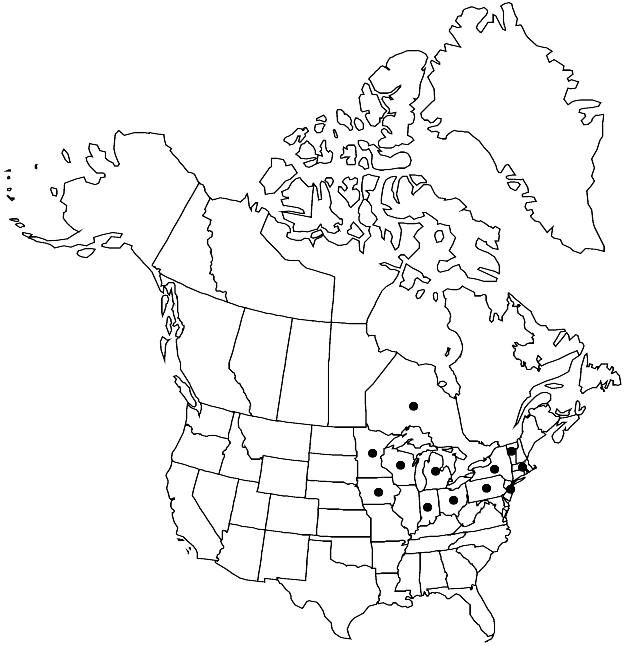Difference between revisions of "Elodium elodioides"
Phytoneuron 2012 – 70: 6. 2012.
FNA>Volume Importer |
FNA>Volume Importer |
Revision as of 19:46, 24 September 2019
Plants medium-sized, in somewhat coarse mats, dark green or yellow-brown. Stems yellowish dark green, spreading, loosely subpinnate, branches unequal, moderately flexuose; central strand present; paraphyllia many, loosely felted on stems and branches, to 7–9 cells in length. Stem and branch leaves loosely foliose, spreading when moist, broadly cordate-ovate, sulcate-plicate, stem leaves (1–)1.5–2 mm, branch leaves 0.6–1 mm; margins flat to erect-recurved on one or both sides in acumen, denticulate, teeth short, sharp, from projecting distal cell ends; apex abruptly long-acuminate, acumen broad, channeled; costa ending in acumen near apex to subpercurrent, proximal abaxial surface with 1 or 2 scattered teeth; stem leaf laminal cells oblong-rhomboidal to oblong-fusiform, angles somewhat rounded, abaxial surface strongly 1-papillose centrally or nearer distal ends of lumen, walls thick, especially in margins. Perichaetia leaf margins toothed distally, teeth short, irregularly spaced, distant, sharply pointed, antrorse, regularly denticulate in acumen. Seta 2–2.8 cm. Capsule 2–2.5 mm.
Phenology: Capsules mature late spring.
Habitat: Soil, logs, wet depressions, swampy hardwood forests, thin soil on acid rock ledges, wet sand, pond borders, bogs, swamps
Elevation: moderate elevations
Distribution

Ont., Ind., Iowa, Mass., Mich., Minn., N.J., N.Y., Ohio, Pa., Vt., Wis.
Discussion
Elodium elodioides was first recognized within the genus as a variety by Best, and was maintained as such by Crum, Steere, and Anderson and by Grout within the variation of the other two North American species of Elodium (as Helodium) until reinstated as a species by Eckel. As the original authors stated, the species shares characteristics of the other two, but otherwise does not intergrade with them. The stem central strand is not present in plants of E. blandowii nor do seta and capsule dimensions of that species match those of E. elodioides. The short laminal cells with strongly displayed papillae and cordate-acuminate leaf shape do not intergrade with the translucent, nearly smooth-celled, lanceolate leaves of E. paludosum.
Selected References
None.